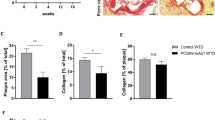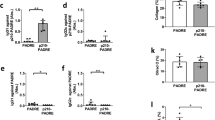Abstract
β2-glycoprotein I (β2-GPI) is a plasma protein that interacts with oxidized low-density lipoproteins (oxLDL) via β2-GPI domain V to form oxLDL/β2-GPI complexes, potential autoantigens promoting atherogenesis in patients with antiphospholipid syndrome (APS). Such a interaction would expose β2-GPI domain I or/and IV, structures recognized by anti-β2-GPI autoantibodies. IgG immune complexes with oxLDL/β2-GPI complexes can interact with macrophages via Fcγ receptor, causing oxLDL/β2-GPI endocytosis and foam cell formation, contributing to atherosclerosis. Here, we use recombinant domain V to study the interaction between oxLDL and β2-GPI and hypothesized that domain V would interfere with this interaction thereby reducing oxLDL macrophage uptake and foam cell formation. The β2-GPI domain V sequence was expressed by using the Pichia pastoris expression system to obtain recombinant domain V of β2-GPI (P.rβ2-GPI DV). ELISA tests demonstrated that P.rβ2-GPI DV interacted with oxLDL via 7-ketocholesteryl-9-carboxynonanoate (oxLig-1), a negatively charged lipid moiety of oxLDL. The ω-carboxyl residue of oxLig-1 is required for the interaction. Serologic tests showed a significant increase in oxLDL and oxLDL/β2-GPI levels in patients with APS (p < 0.05 compared to controls). P.rβ2-GPI DV was able to bind oxLDL in high affinity and competitively inhibited native β2-GPI (nβ2-GPI) binding to free oxLDL as well as to oxLDL from the oxLDL/β2-GPI complexes. These observations suggest that P.rβ2-GPI DV may be used to inhibit the formation of the oxLDL/β2-GPI complexes, a potential approach for reducing foam cell development and mitigating atherogenesis in patients with APS. The present work provides a new effective strategy to prevent the progression of atherothrombotic vascular complications in APS patients.





Similar content being viewed by others
References
Hughes GR, Harris NN, Gharavi AE. The anticardiolipin syndrome. J Rheumatol. 1986;13(3):486–9.
Harris EN, Chan JK, Asherson RA, Aber VR, Gharavi AE, Hughes GR. Thrombosis, recurrent fetal loss, and thrombocytopenia. Predictive value of the anticardiolipin antibody test. Arch Intern Med. 1986;146(11):2153–6.
Galli M, Comfurius P, Maassen C, Hemker HC, de Baets MH, van Breda-Vriesman PJ, et al. Anticardiolipin antibodies (ACA) directed not to cardiolipin but to a plasma protein cofactor. Lancet. 1990;335(8705):1544–7.
Sheng Y, Kandiah DA, Krilis SA. Beta2-glycoprotein I: target antigen for ‘antiphospholipid’ antibodies. Immunological and molecular aspects. Lupus. 1998;7 Suppl 2:S5–9.
Liu Q, Kobayashi K, Furukawa J, Inagaki J, Sakairi N, Iwado A, et al. Omega-carboxyl variants of 7-ketocholesteryl esters are ligands for beta(2)-glycoprotein I and mediate antibody-dependent uptake of oxidized LDL by macrophages. J Lipid Res. 2002;43(9):1486–95.
Kobayashi K, Matsuura E, Liu Q, Furukawa J, Kaihara K, Inagaki J, et al. A specific ligand for beta(2)-glycoprotein I mediates autoantibody-dependent uptake of oxidized low density lipoprotein by macrophages. J Lipid Res. 2001;42(5):697–709.
Matsuura E, Kobayashi K, Tabuchi M, Lopez LR. Oxidative modification of low-density lipoprotein and immune regulation of atherosclerosis. Prog Lipid Res. 2006;45(6):466–86.
Matsuura E, Kobayashi K, Matsunami Y, Lopez LR. The immunology of atherothrombosis in the antiphospholipid syndrome: antigen presentation and lipid intracellular accumulation. Autoimmun Rev. 2009;8(6):500–5.
Greco TP, Conti-Kelly AM, Anthony JR, Greco Jr T, Doyle R, Boisen M, et al. Oxidized-LDL/beta(2)-glycoprotein I complexes are associated with disease severity and increased risk for adverse outcomes in patients with acute coronary syndromes. Am J Clin Pathol. 2010;133(5):737–43.
Ioannou Y, Pericleous C, Giles I, Latchman DS, Isenberg DA, Rahman A. Binding of antiphospholipid antibodies to discontinuous epitopes on domain I of human beta(2)-glycoprotein I: mutation studies including residues R39 to R43. Arthritis Rheum. 2007;56(1):280–90.
Kasahara H, Matsuura E, Kaihara K, Yamamoto D, Kobayashi K, Inagaki J, et al. Antigenic structures recognized by anti-beta2-glycoprotein I auto-antibodies. Int Immunol. 2005;17(12):1533–42.
Hashimoto Y, Kawamura M, Ichikawa K, Suzuki T, Sumida T, Yoshida S, et al. Anticardiolipin antibodies in NZW x BXSB F1 mice. A model of antiphospholipid syndrome. J Immunol. 1992;149(3):1063–8.
Hoshino M, Hagihara Y, Nishii I, Yamazaki T, Kato H, Goto Y. Identification of the phospholipid-binding site of human beta(2)-glycoprotein I domain V by heteronuclear magnetic resonance. J Mol Biol. 2000;304(5):927–39.
Hong DP, Hagihara Y, Kato H, Goto Y. Flexible loop of beta 2-glycoprotein I domain V specifically interacts with hydrophobic ligands. Biochemistry. 2001;40(27):8092–100.
Matsuura E, Inagaki J, Kasahara H, Yamamoto D, Atsumi T, Kobayashi K, et al. Proteolytic cleavage of beta(2)-glycoprotein I: reduction of antigenicity and the structural relationship. Int Immunol. 2000;12(8):1183–92.
McGrew JT, Leiske D, Dell B, Klinke R, Krasts D, Wee SF, et al. Expression of trimeric CD40 ligand in Pichia pastoris: use of a rapid method to detect high-level expressing transformants. Gene. 1997;187(2):193–200.
Matsuura E, Igarashi Y, Fujimoto M, Ichikawa K, Suzuki T, Sumida T, et al. Heterogeneity of anticardiolipin antibodies defined by the anticardiolipin cofactor. J Immunol. 1992;148(12):3885–91.
Pratico D, Ferro D, Iuliano L, Rokach J, Conti F, Valesini G, et al. Ongoing prothrombotic state in patients with antiphospholipid antibodies: a role for increased lipid peroxidation. Blood. 1999;93(10):3401–7.
Ames PR, Alves J, Murat I, Isenberg DA, Nourooz-Zadeh J. Oxidative stress in systemic lupus erythematosus and allied conditions with vascular involvement. Rheumatology (Oxford). 1999;38(6):529–34.
Berliner JA, Heinecke JW. The role of oxidized lipoproteins in atherogenesis. Free Radic Biol Med. 1996;20(5):707–27.
Steinberg D. Low density lipoprotein oxidation and its pathobiological significance. J Biol Chem. 1997;272(34):20963–6.
Kobayashi K, Kishi M, Atsumi T, Bertolaccini ML, Makino H, Sakairi N, et al. Circulating oxidized LDL forms complexes with beta2-glycoprotein I: implication as an atherogenic autoantigen. J Lipid Res. 2003;44(4):716–26.
Funding
This work was supported by grants from the National Natural Science Foundation of China (No: 81270361, 30971232, 81202536, L2012435).
Author information
Authors and Affiliations
Corresponding authors
Additional information
Jingda Li and Yan Chi contributed equally to the work.
Rights and permissions
About this article
Cite this article
Li, J., Chi, Y., Liu, S. et al. Recombinant Domain V of β2-Glycoprotein I Inhibits the Formation of Atherogenic oxLDL/β2-Glycoprotein I Complexes. J Clin Immunol 34, 669–676 (2014). https://doi.org/10.1007/s10875-014-0063-y
Received:
Accepted:
Published:
Issue Date:
DOI: https://doi.org/10.1007/s10875-014-0063-y




